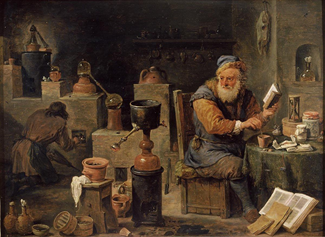Doina Cristina Rusu
Manipulating Spiritual Matter
How Did Early Modern Science Become Experimental?
(NWO – Veni scheme, 2016-2020)
One of the key features of seventeenth-century science is the inclusion of experiments in the investigation of nature. Experimentalism is linked to corpuscularianism – a matter theory that takes bodies to be composed of small particles, or ‘corpuscles’. Both experimentalism and corpuscularianism are generally taken to break with the Aristotelian-scholastic tradition, relying instead on sources such as medieval and Renaissance alchemy, natural magic and the liberal arts. However, given that experimentalism and corpuscularianism were not tightly linked before the second half of the seventeenth century, corpuscularianism by itself cannot explain the emergence of experimental philosophy.

The scientific challenge to be answered by this project is how natural philosophers in the seventeenth century came to combine experimentalism with corpuscularianism in such a fundamental way. My working hypothesis is that the emergence of experimentalism in the seventeenth century was made possible by the new notion of ‘spirits’. Spirits were conceived to be inherent in matter and to represent the source of activity of natural beings. Given these characteristics, ‘spirits’ were used to explain those functions and features that Aristotelians had traditionally attributed to substantial forms. Yet, early modern natural philosophers assumed that ‘spirits’, unlike substantial forms, could be manipulated in the laboratory, so as to bring about changes in natural bodies. Because of their materiality and subtlety, spirits would come to be accounted for in corpuscular terms. In order to prove my hypothesis I will analyse the work of three authors who are highly representative of how the notion of spirits led to the progressive combination of experimentalism and corpuscularianism: Girolamo Cardano, Francis Bacon and Jan Baptista van Helmont. Through this analysis, the project will uncover how the evolution of a new matter theory and of experimental practices merged into a new paradigm for science in the second half of the seventeenth-century.
Doina Cristina Rusu's profile pages
| Last modified: | 21 April 2023 11.44 a.m. |
